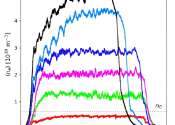Madison Symmetric Torus operates stable plasma at 10 times the Greenwald Limit
If net-positive fusion energy is to ever be achieved, density is key: the more atomic nuclei crashing into each other, the more efficient the reaction will be. Nearly 40 years ago, Martin Greenwald identified a density limit ...









